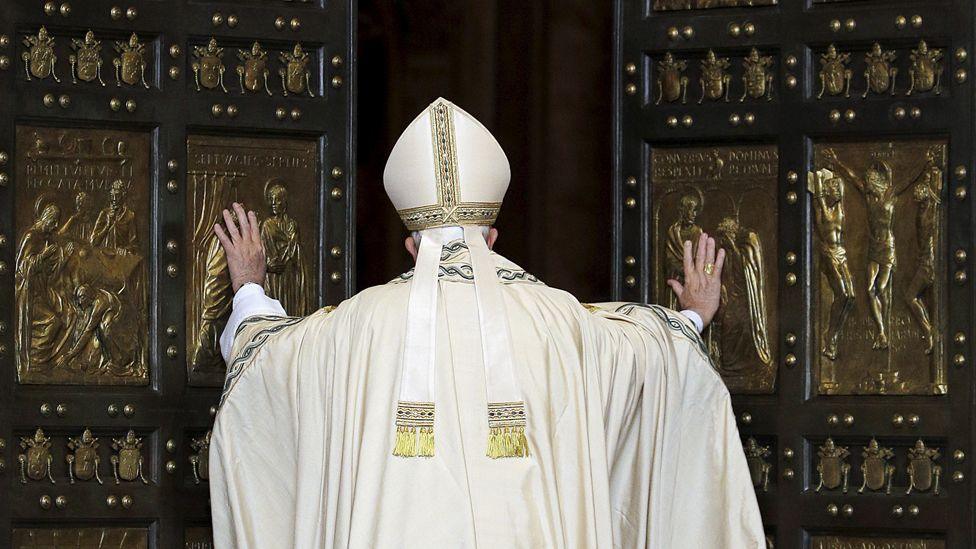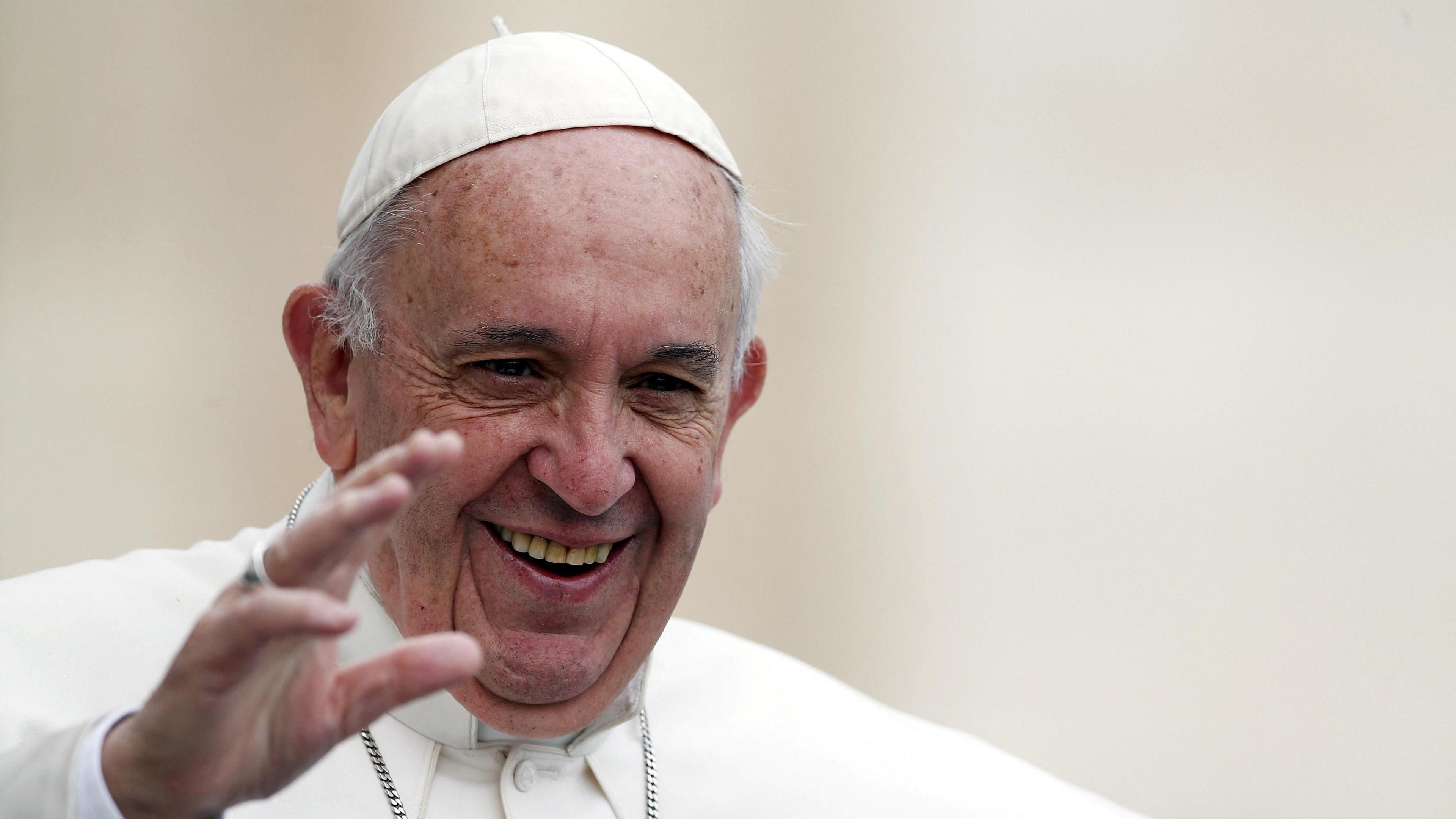Pope Francis and his relationship with 'the green country'
The Pope's visit to Ireland in 2018
- Published
Fr Jorge Bergoglio often described Ireland affectionately as "the green country", recalling his first impressions of its landscape when, in 1980, he spent a short sabbatical in Dublin trying to improve his English.
When the Argentinian priest made a return visit, in August 2018, he was known by a different name: Pope Francis.
The Vatican confirmed that Pope Francis died at the age of 88 on Easter Monday.
During the 2018 visit, he became only the second pope in the church's history to set foot on Irish soil.
John Paul II, who visited in 1979 at the height of the Troubles, famously told a crowd of 300,000 people in Drogheda: "On my knees, I beg you to turn away from the paths of violence and return to the ways of peace."
Nearly 40 years later, at a state reception in Dublin Castle, Pope Francis lauded the work of those who negotiated the Good Friday Agreement and expressed his "firm hope that the peace process will overcome every remaining obstacle and help give birth to a future of harmony, reconciliation and mutual trust".
However, the former Irish President Mary McAleese said the Pope "took wrong advice" when planning his visit to Dublin by not visiting Northern Ireland.
It was "completely wrong-headed," she told BBC's Evening Extra programme.
"He should have gone," she added.
"The leaders of the protestant churches had invited him to Northern Ireland. Itself a wonderful, miraculous thing, and he didn't go... At the time there was no government in place in Northern Ireland and that might have weighed heavily in the thinking, but I also just think he got bad advice."
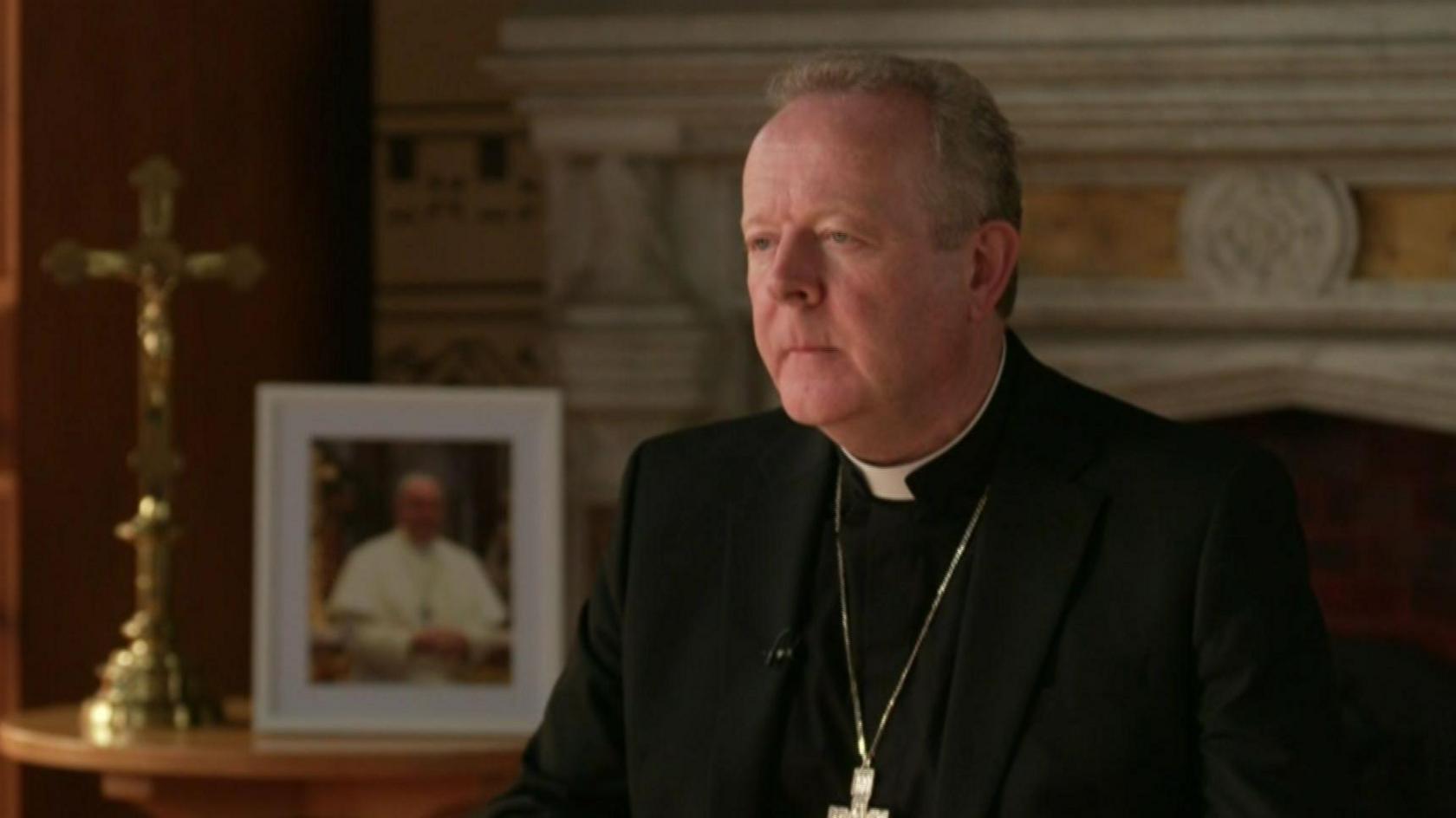
Archbishop Eamon Martin believes that commitment to peace inspired the Pope's choice of a papal name
Archbishop Eamon Martin, the primate of All Ireland, says the Pope often asked for updates on the Irish peace process when they met.
"He had a great interest in how things were in Northern Ireland, and how well the peace was developing. And he asked if he could make a message to Ireland to commend us on the journey of peace that we have taken and to encourage us to persevere on that road."
Archbishop Martin believes that commitment to peace inspired the Pope's choice of papal name.
"He chose the name Francis, of course, and it was a daring thing to do. He was the first Pope ever to use the name of the great Saint Francis of Assisi.
"And that message of peace, of praising God in creation, the message of brotherhood and sisterhood—of fraternity—characterised the pontificate of Pope Francis."
But between those two papal visits — from John Paul's passionate pleading for peace to Francis's endorsement of an historic peace process — Ireland had changed almost beyond recognition.
A country once seen as a citadel of global Catholicism had seen plummeting church attendance as the moral credibility of bishops and priests was undermined by the twin forces of secularisation and the clerical abuse crisis.
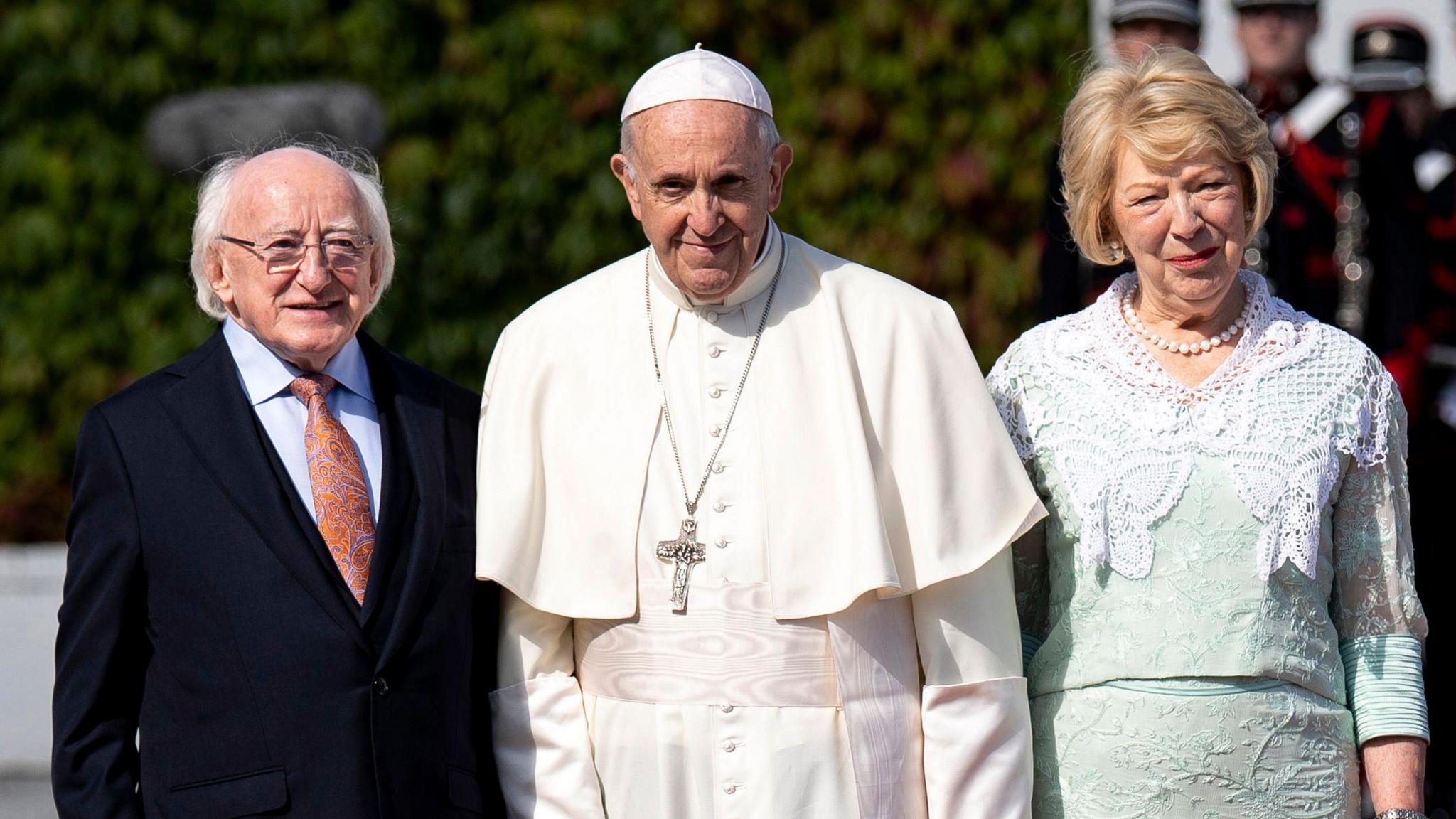
Pope Francis with President of Ireland Michael D Higgins and his wife Sabina Coyne
In welcoming the Pope, then Taoiseach (Irish prime minister) Leo Varadkar told him Ireland was a more diverse, less religious place, a country which understood that "marriages do not always work, that women should make their own decisions, and that families come in many different, wonderful forms, including those headed by a grandparent, lone parent or same-sex parents, or parents who are divorced".
As Ireland's first gay head of government, Varadkar seemed to embody the social transformation he was describing.
The taoiseach also called for a "new relationship between church and state", urging the Pope to address the "history of sorrow and shame" laid bare by the abuse of vulnerable children.
Hours later, Francis met eight survivors of clerical abuse for 90 minutes at the Vatican embassy in Dublin.
At the final Mass in Phoenix Park the next day, the Pope recalled that meeting and then offered a series of apologies, written in his own hand, for the "crimes" of clerical abuse and made a public plea for forgiveness.
'Profound apology'
Fr Timothy Bartlett, who had a key role in planning the Pope's visit, says this "penitential act" was "the most profound, eloquent and developed apology to those who had been hurt by abuse in the church".
"I am absolutely satisfied that historians will look back at that and regard it as one of the most profound apologies ever given on this issue."
It was Fr Bartlett who gave the Pope the sheet of paper he used to pen that historic apology on the flight from the Knock Shrine to the Irish capital.
"I think it will go down as one of the most eloquent, personal and profound acknowledgements of all of that issue and hurt," he told BBC Radio Ulster's Talkback programme on Monday.
"He had been dealing with all these other things, but he stayed attentive to the victims of abuse he had met the night before.
"That was what was dominant in his mind."
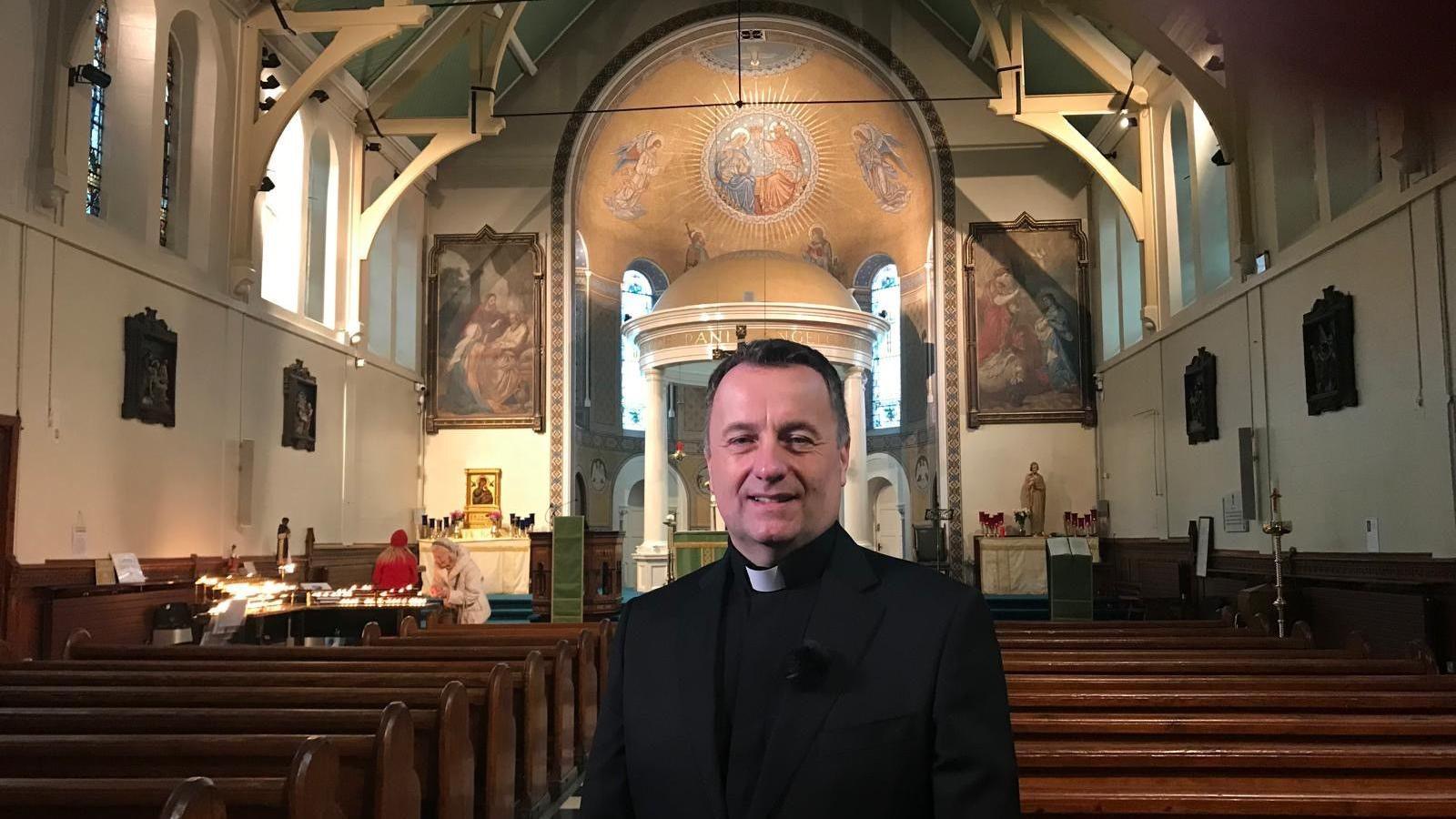
Fr Tim Bartlett described Pope Francis as fearless
Archbishop Martin thinks it is also significant that Pope Francis asked to meet with homeless people at the Capuchin Day Centre in Dublin.
"Pope Francis always exercised a preferential option for the poor, for those on the peripheries, for those who were not only poor materially, but who were excluded from society, or indeed from the church.
"He wanted to walk to them, to accompany them. I think that made him fearless in speaking quite prophetically to the church, to society and to the global world."
When the Pope completed his 32-hour visit to Ireland, he returned to his home in Rome, where he had chosen to live amongst others in a Vatican guesthouse, rather than reside in the solitary splendour of the Apostolic Palace.
More than once, he publicly criticised bishops who spent large sums of money to support a lavish lifestyle. And he warned new cardinals not to see themselves as "princes of the church", but rather as servants.
"Humility", the Pope would later say, "is the gateway to all virtues."
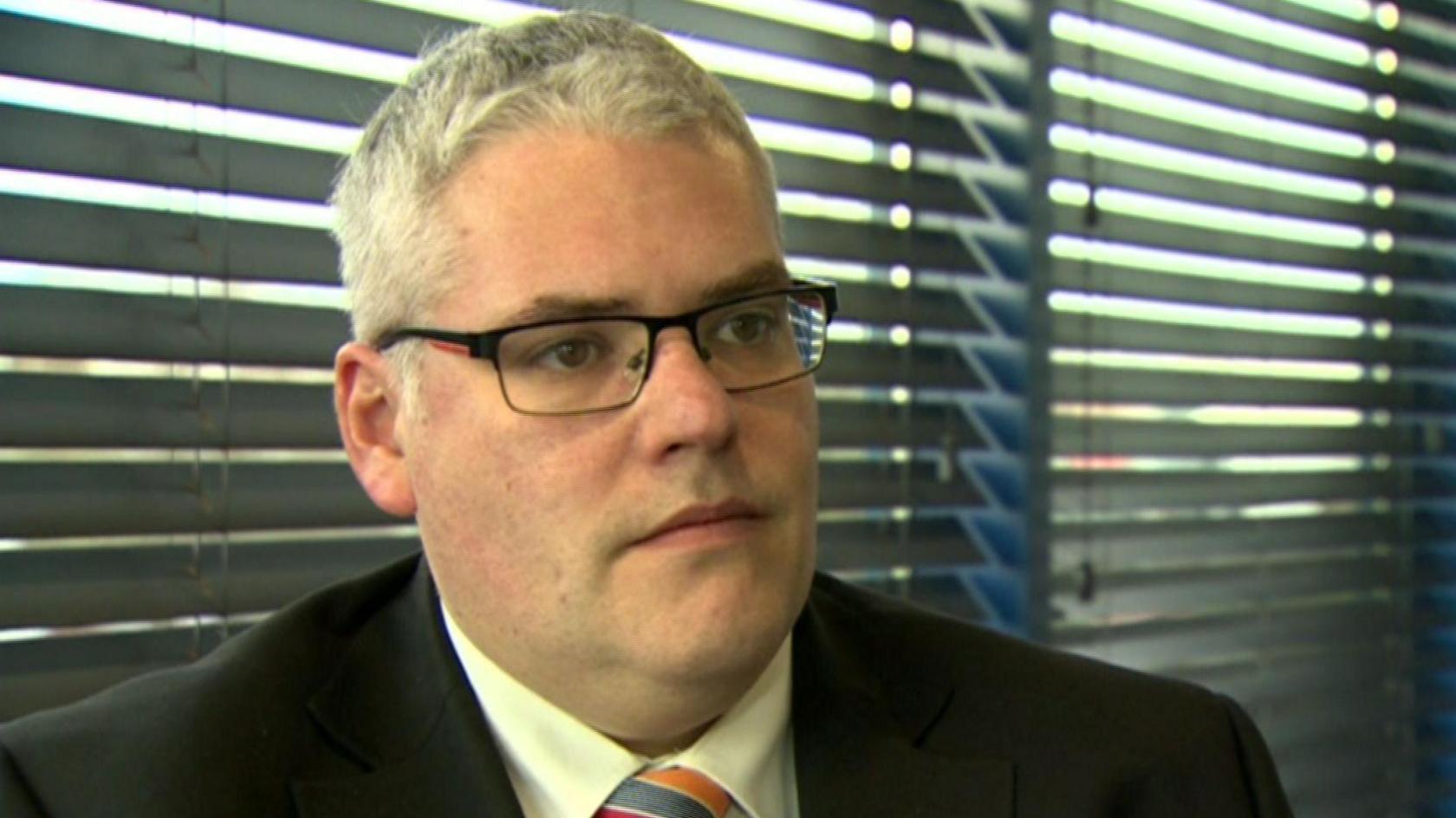
DUP leader Gavin Robinson said Pope Francis brought "early principles of Christian faith" to the role of Pope
It was this personal modesty that impressed so many who met Pope Francis—even those outside the Catholic fold.
The Democratic Unionist Party (DUP) leader Gavin Robinson told BBC News NI that Pope Francis "injected a level of humility that we don't often recognise within the Catholic Church, that you don't see through the opulence of St Peter's Basilica, Rome, the Vatican, the state that it is".
"No flashy cars, no flashy suits, no flashy shoes. He was somewhat different and he brought the sort of early principles of Christian faith that I would recognise into a role that I see quite far apart from that.
"So he wanted to do things differently. He seemed a more gentle, humble, engaging, caring individual."
- Published26 August 2018
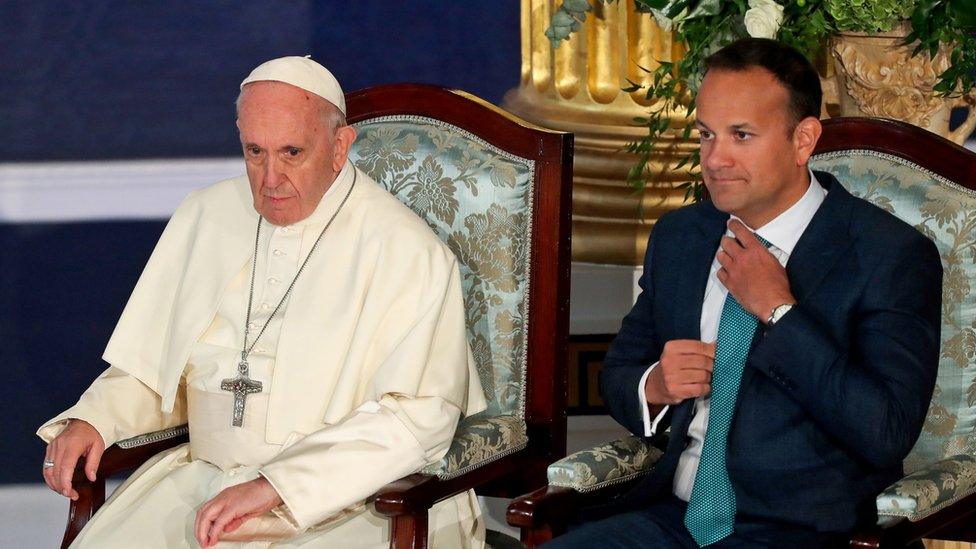
- Published25 April
